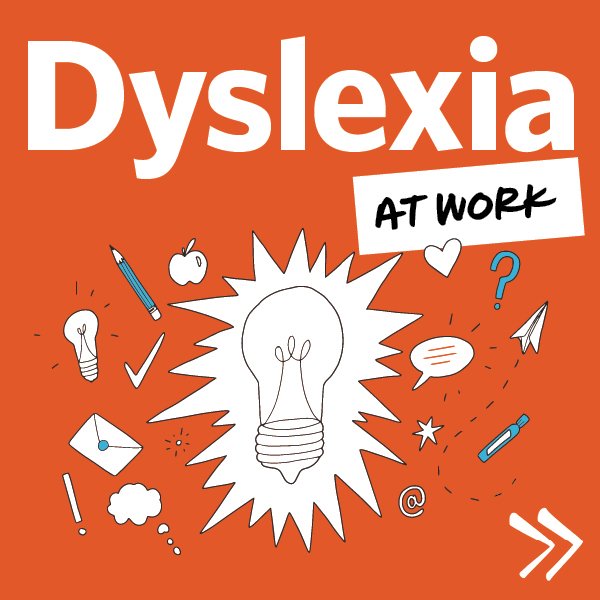- Our School
- Our Advantage
- Admission
- Elementary•Middle School
- High School
- Summer
- Giving
- Parent Resources
- For Educators
- Alumni
« Back
Dyslexia at School
April 5th, 2023
.png?v=1677180832215)
Dyslexia at School
Seeking specific support at each step of your child’s educational career can lead to a more productive and enriching school experience.
by Rob Kahn
Consider this excerpt from the IDA’s definition of dyslexia: “It is referred to as a learning disability because dyslexia can make it very difficult for a student to succeed academically in the typical instructional environment…”
For people with dyslexia, the school years often present challenges. Any delay in acquiring or employing literacy skills sets students with dyslexia apart in an environment where processing language is the basis for nearly every expectation and interaction.
Whatever the stage of schooling, the reason the school years can be difficult is the same “reason” that square pegs and round holes don’t play well together. Neither one is right or wrong, better or worse.
They just aren’t designed to work with each other. The more we learn about the strengths and challenges of having dyslexia, the more the disconnect between school and real life becomes apparent.
See School is Not Real by Josh Clark for more on this.
The fight to even the playing field for all learners is two-fold: While we engage with the educational system in response to neurodiversity and real-world demographics, we also have to examine how to give those students with dyslexia tools to survive and thrive. It is not zero-sum: A useful assumption is that everyone involved wants all students to succeed.
Let’s organize the typical school journey into stages, and talk about essentials for navigating the school experience.
.png?v=1678303281588)
The Early Years
Family members and caregivers play a key role in the preschool years. Experts agree that early identification is the path to acquiring basic literacy skills, and getting a diagnosis is the key to accessing effective remediation and accommodations when needed.
Resources such as the Yale Center for Dyslexia & Creativity, Reading Rockets, and many others have helpful information on what to look for at an early age.
Pre-K Getting Ready to Read and Write
Early assessment with science-based screening tools is growing. As of July 28, 2022, 29 states and the District of Columbia have passed laws or implemented new policies related to evidence-based reading instruction. Information on Massachusetts’s policy and laws around literacy screening can be found at:
Early Literacy Universal Assessment and Massachusetts Dyslexia Guidelines.

Elementary Through High School
For students with dyslexia, it’s not primarily about content and curriculum but rather about access and the rules of engagement. The more that curriculum and assessment depend on literacy skills and traditional norms of presentation and testing, the greater the risk that students with dyslexia will be marginalized and not well served.
There is no longer a debate that a science-based, structured language approach to teaching reading is the most effective method for students with dyslexia. Parents and students can use a variety of sources to keep informed about and evaluate the approaches to literacy acquisition practiced in their school.
If we look at the two sides of the challenge—equipping the dyslexic brain for school while trying to shape school to be inclusive of all brains, we can identify key priorities for parents and students:
- Specific focus on literacy skills as a primary goal along with content
- Appropriate modifications in class and on assignments
- Interfacing with instructors who are informed about dyslexia and are also patient and flexible
- Communication for families to school personnel in a supportive, non-adversarial channel; students to teachers from the standpoint of self-knowledge and advocacy.
Retooling educational systems, like any systemic change, will take time and sustained advocacy. Informed students and parents/guardians can use local and national resources (Decoding Dyslexia, International Dyslexia Association [IDA], National Center for Learning Disabilities [NCLD], The Yale Center for Dyslexia & Creativity Advocacy Toolkit) to work both sides of the equation: ensuring successful experiences for their children by staying involved, looking at assessment results, asking questions, while also exploring advocacy groups to push for equitable change for all types of learners.
Top priorities for educational policy makers and teachers at these levels are to institute effective training for identification and remediation (e.g., Landmark Outreach, LETRS) to ensure teachers have access to training during paid hours. Research has linked dyslexia to school failure and higher rates of incarceration for nearly 80 years.
When their personality, strengths, and hopes are a mismatch with the expectations of the school environment, students with dyslexia are caught in a bind. They are always playing “defense” and trying to cope with demands while not having time or space to share their strengths. It can be a no-win situation if they are not provided with the basic tools needed to succeed. As students get older and assume increasing responsibility for their personal journey, schools and families are faced with a metacognitive challenge: while students learn, they also need to learn how they learn. When an educational setting matches student needs, such as Landmark School, you begin to hear families say things like, “I have my child back.”

Post-Secondary
Self-Knowledge Leading to Self-Advocacy
Remediation during the later school years has a threefold goal: provide the literacy skills needed, restore self-confidence and a sense of competence, and instill a game plan that supports the student’s learning profile for future success.
Here’s what we’ve learned from our own students and families at Landmark School:
- Be clear and realistic about the next step after high school.
- Make the student an active partner in determining the right fit for the immediate future.
- Be open to alternatives when exploring the path that feels right, which may be a gap year or a vocation.
- If the immediate next step is college, seek out schools known for their student services and validate what you learn by visits and information from alumni.
Strategies and self-advocacy should be essential take-aways from high school. The strategies that work come from a student’s own understanding of their learning profile. The self-advocacy skills help in forming trusted relationships, two-way communication, and use of accommodations.
Learn More About How to Teach Reading:
A-Z of Teaching Reading
The Yale Center for Dyslexia & Creativity
Questions and Answers/FAQs
Reading Rockets
Providing support for your child with dyslexia at home
Reading Rockets
Technology for High School, College, and Beyond
In the formative years when literacy skills are being built, tech work-arounds can actually be a drawback. While they may allow access to content, if they bypass acquiring a toolbox for literacy, then they are not sustainable as a strategy. However, once in college, students with dyslexia generally find technology skills to be absolutely essential, combined with organizational and executive functioning assists to make time management and self-monitoring productive. Landmark alumni have mentioned products with integrated suites of features such as Capti Voice, Read&Write Gold, and apps such as Notability and Recorder Plus for their utility—and there are many others. But the key is the underlying self-advocacy and metacognitive awareness that students take away from their school years.
This translates into the ability to determine what works best for each individual in their particular post-secondary or graduate setting. For example, Olivia Hearn ’22 noted: “If you read your notes to someone like you are teaching them, you can retain the information better,” and Ethan Cadorette ’22 added that basic organizational habits have become critical scaffolding in college: “I still use an organizer for all my work to stay on top of assignments. You can forget assignments very easily and the teacher won’t always remind you. I put all dates of exams from the syllabus into my calendar. You are on your own for a lot of the work you do in college unless you seek out the help, which I recommend you do if you feel it’s beneficial.”
It’s not the bells and whistles that define what works, but rather the metacognitive understanding of the person using the tech assist. As alumna Ashley Holmes ’13 points out: “The tool that I use the most at work is the read aloud function in Word. It helps me proofread important content. The computer has to read exactly what I write and sometimes it does not make sense. I am able to hear the mistake and make the necessary changes. If I proofread my work without an audio assistant I would read what I want it to say, not what I wrote.”
For individuals with dyslexia, greater acknowledgement and validation in the last few years have led to positive change, but there is much to do—particularly in schools.
- For the pre-school and early years: continue to push for early identification and linguistically based approaches.
- During elementary and secondary school: increase teacher training initiatives and accommodations.
- In the post-secondary world: use technology and curriculum that not only facilitates learning but also incorporates the valuable perspectives of neurodiversity.

Dyslexia Guidebook
Download the Dyslexia Guidebook or view it as a digital flip book.
Purchase Printed Copies
Want to printed copies of the Dyslexia Guidebook? You can purchase sets of 25 through Landmark Outreach.
Posted in the category Learning Disabilities.




















.jpg?v=1677184547770)





